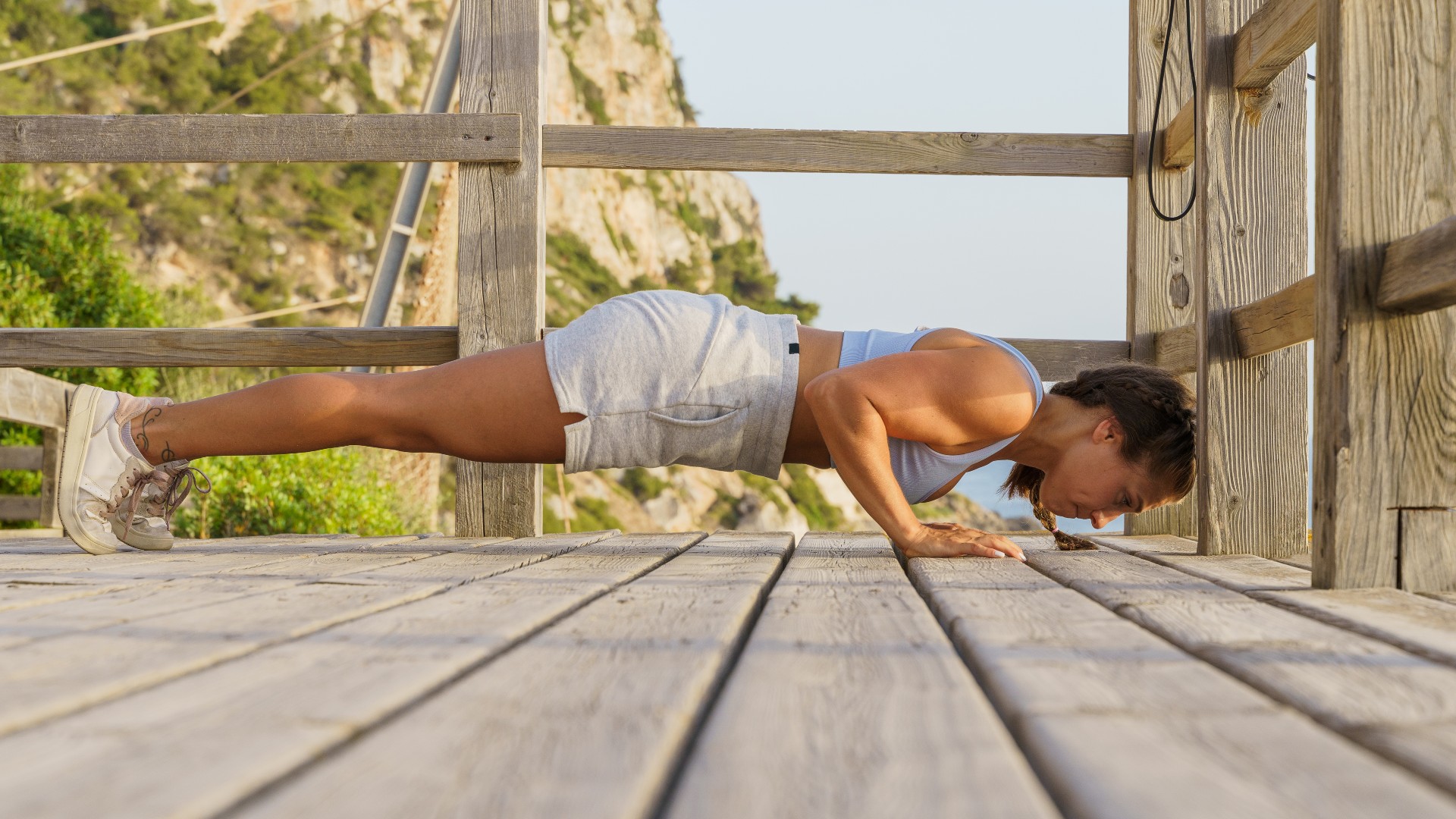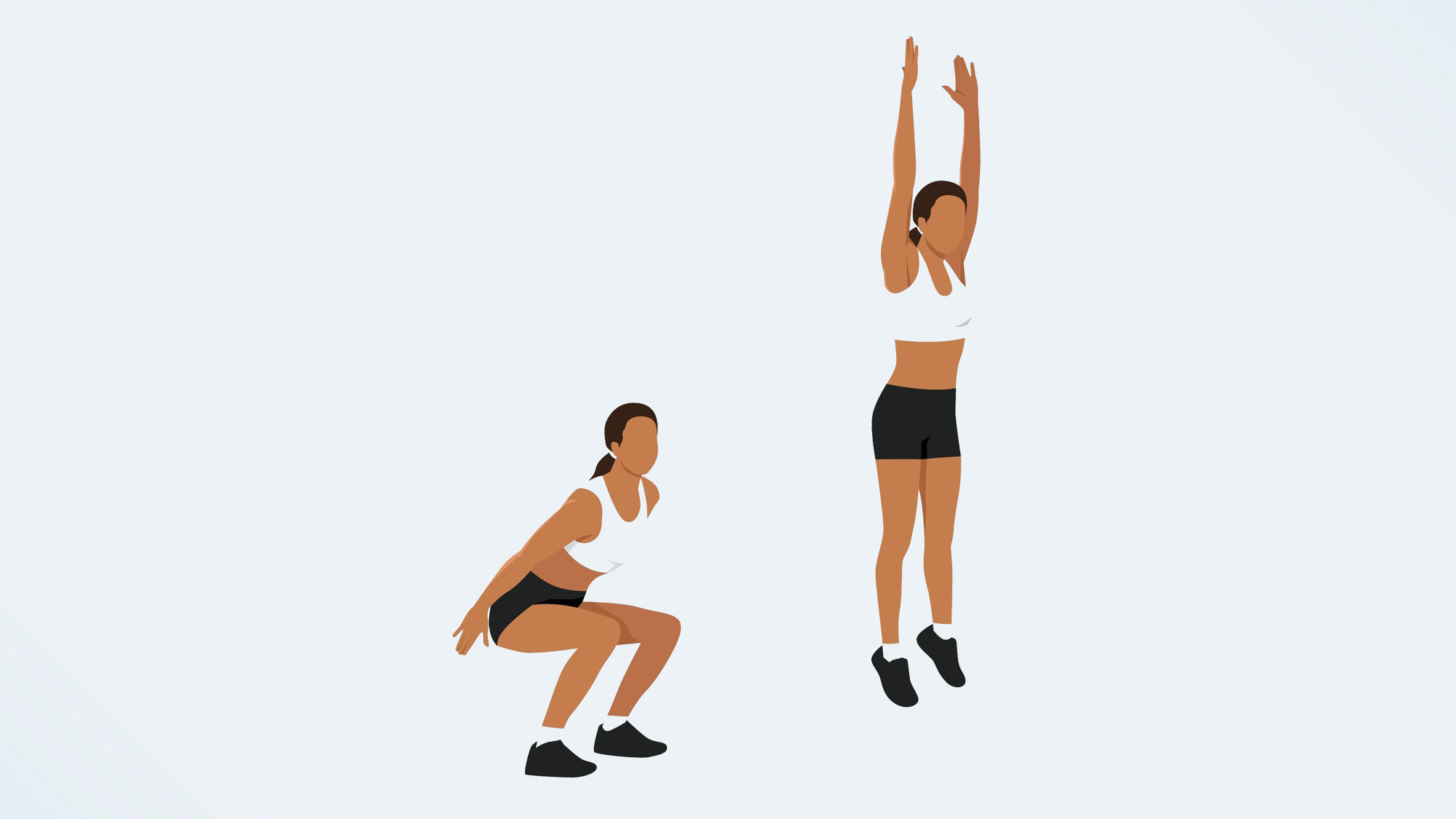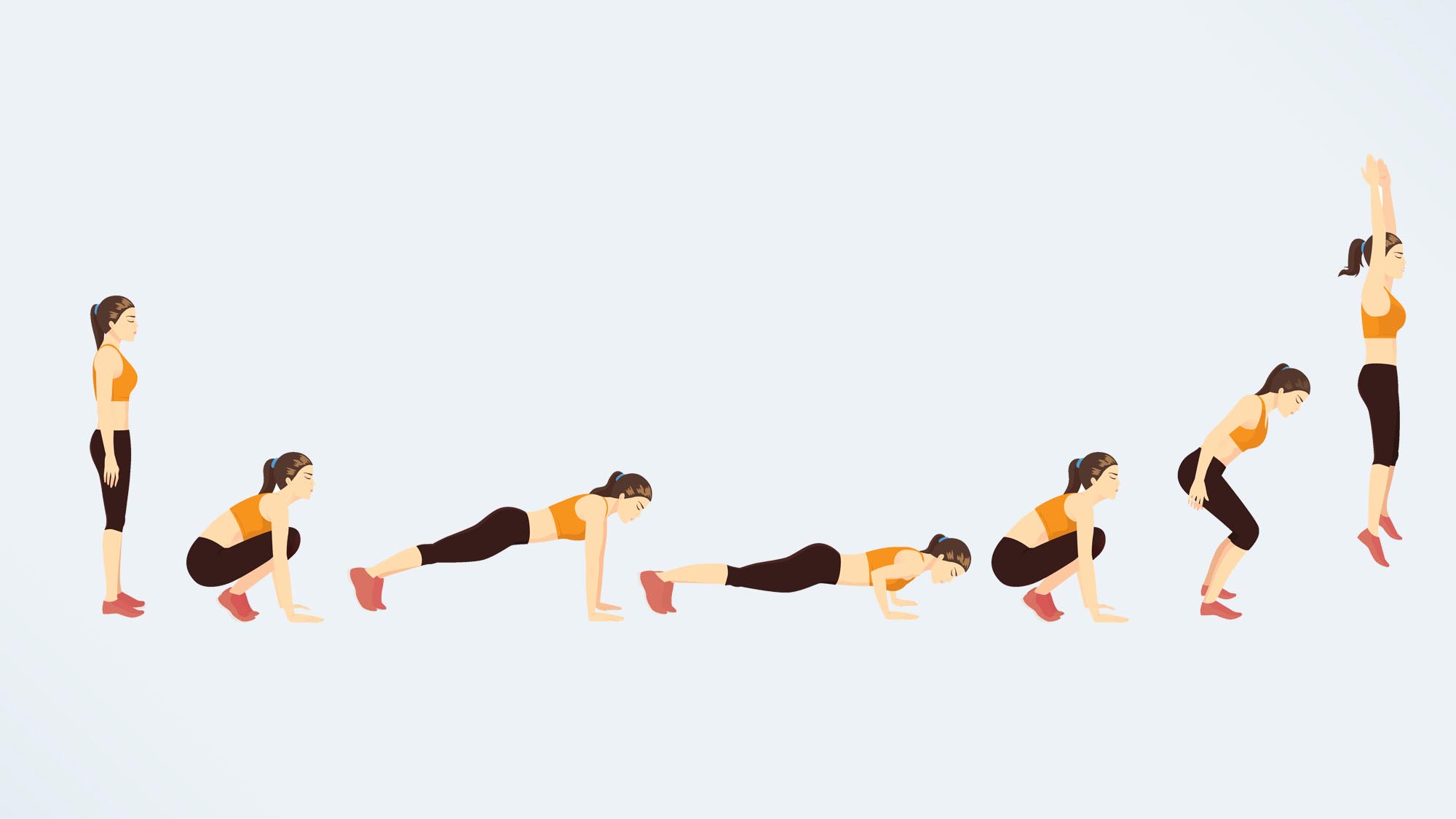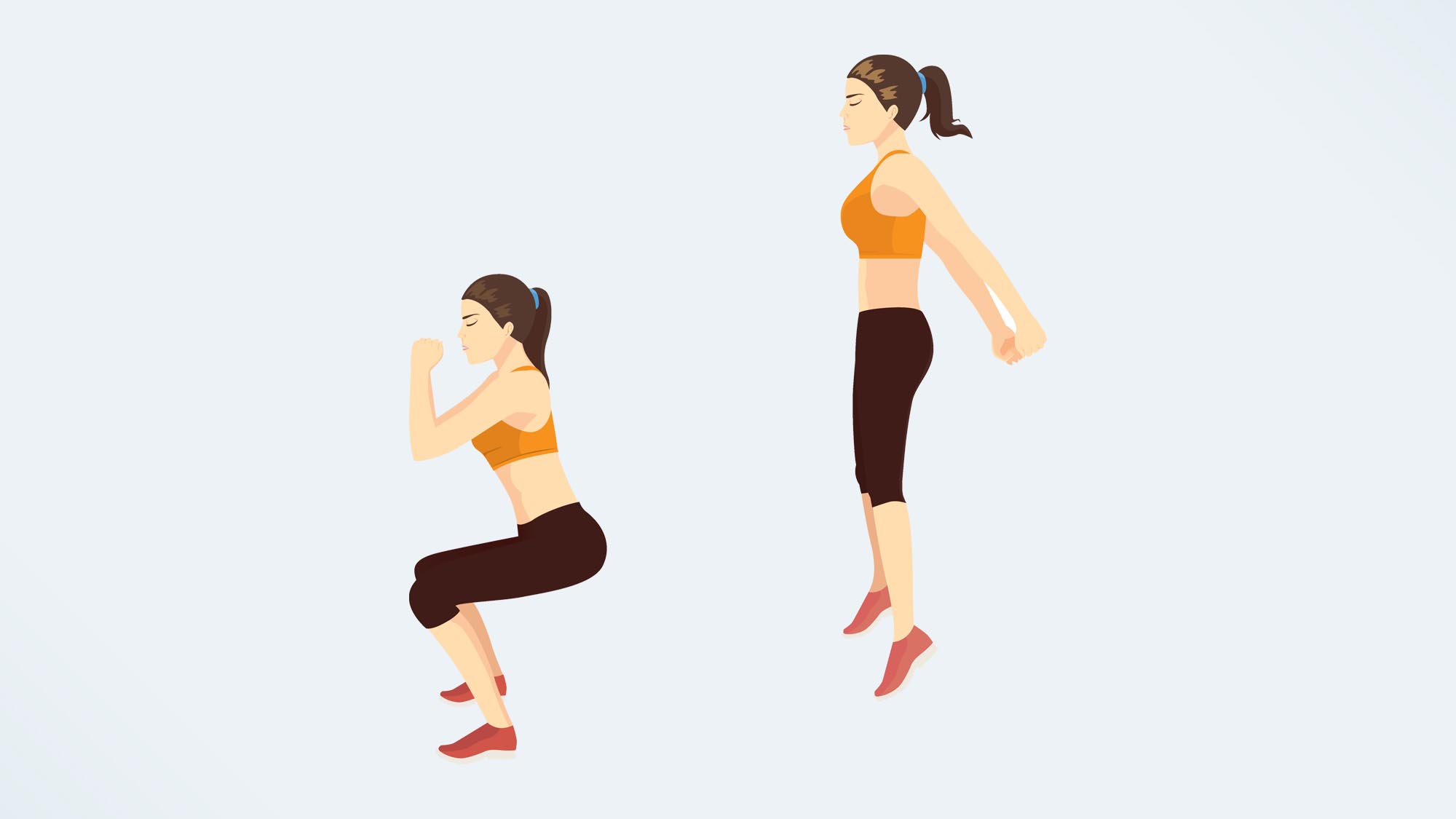
When I feel like I’ve spent too much time at my desk, the first thing I do is step outdoors and spend some time in nature. In London, “nature” is a term used loosely. But even grounding my feet on the grass for 10 minutes can make me feel calmer and more centered.
Given that I spend most of my time either in a hot yoga studio or a CrossFit gym (aside from writing at my desk), the only time I exercise outdoors is when I head off for a run or walk my dog. Coaching outdoors doesn’t really count for me. With that in mind, I decided to get outside and take my 25-minute calisthenics routine with me.
Capable of building functional strength and boosting the metabolism, wherever you do it — this routine is also a test of mental stamina. Here’s what happened when I tried it in my local park, plus the full four-move workout for you to try too. Can you hold on to the end?
Is calisthenics better than the gym?
Whether you prefer gym workouts or using calisthenics to get stronger and more mobile, both are worthy and fulfill different fitness needs. The benefit of calisthenics is that you can take it anywhere, given you’re exercising with your bodyweight and minimal equipment.
A calisthenics workout also lends itself to outdoor environments because you can use park equipment like pull-up bars and benches within your routine.
uper versatile, beginner-friendly and with the added benefit of nature, I highly recommend trying calisthenics if you want to spend more time outdoors this spring and summer.
Here’s how.
Get instant access to breaking news, the hottest reviews, great deals and helpful tips.
What is the workout?

Recently, I tried silent walking to increase time outside and work on my mental wellbeing. I found it really helpful for boosting mental stamina, and wondered if I could get the same benefit from more vigorous outdoor workouts.
I love being outdoors, and right now, the weather in the U.K. is unseasonably warm, which gave me no excuse to shunt my butt over to the gym. Instead, I grabbed one of the best yoga mats (for padding me against uneven grass) and headed for my local park with headphones and a bottle of creatine water in tow (my muscles needed it for 25 minutes of pure endurance!)
Beforehand, I had written this program as a class for my clients. With a few tweaks, it worked well as a 25-minute calisthenics routine for myself.
5x5-minute AMRAP
Breakdown:
- Shuttle runs x10
- Burpee broad jumps x5
- Push-ups x20
- Front lunges x20
Set up two markers (I used cones) about 10 meters (32 feet) apart. This is entirely up to you, depending on the distance you want to run.
Set a five-minute timer. Complete 10 shuttle runs (out to one cone and back is one shuttle), then five shuttles of burpee broad jumps. Move straight into 20 push-ups (any variation you like, including incline push-ups, decline push-ups, weighted, or diamond), then 20 front lunges.
You might not make it through a round before the timer ends, and that’s common. Stop wherever you are, then take up to 60 seconds to rest. Start your next five-minute round and continue from where you finished.
For example, if I managed 15 push-ups, I’d start the next round with five push-ups left to do, then move straight to the lunges. Do this for all remaining rounds, completing five rounds in total.
Try to keep all your work efforts unbroken. For example, if I can’t perform all 20 push-ups from my toes, I will perform the rest kneeling. If push-ups are a weak point, start from kneeling or an incline. Try to take a scaled option and complete all 20 without stopping; if you need rest, try not to break more than once.
I recommend refreshing your technique with our how to do a push-up guide and push-up variations you can try to keep things challenging. We also cover how to do a lunge, and you can make them walking lunges if you prefer.
Here's what happened when I tried it
This workout eases you in, then absolutely busts you by round three. That's when you'll need to use your mental stamina to see you through the remaining rounds. Treat the shuttle runs almost like a reset; not your warm-up pace, but not a flat-out 10/10 RPE, either.
The broad jump burpees require explosive power, jumping forward into the air, landing in a squat, then performing a burpee. Remember, you have five shuttles of these to do, which is essentially 10 individual lengths. Find a pace you can maintain and try to match the same number of reps per length.



I find shuttle runs quite fun, so I took the pace up on these and then slowed things down for the broad jump burpees. For the push-ups, I stuck to 10 without knees and 10 with, then smashed out the front lunges quickly in one shot.
I could maintain this technique across five rounds, so I'd chosen the correct intensity and approach, but I still fell to the ground in a sweaty heap, totally spent. Your legs turn to jelly after the lunges, which is when you go straight into your next run. This has a Hyrox vibe because it means running under fatigue, so be warned.
You'll always finish the five-minute sets in a different spot, so you might find you get a chance to break up the shuttle runs or burpees naturally when the timer runs out, which means you can push a little harder in the next round.
The best part about this workout was pushing through it in a natural setting, bathed in sunshine and surrounded by grass, trees swaying and wind gently wicking my sweat away.
Nature and exercise are both tried and tested ways to improve mood and overall emotional wellbeing, so putting them together, naturally, made me feel fantastic afterward.
Trying it for yourself? Take it outside!
More from Tom's Guide
- I've been walking 5K every day to boost my metabolism and build mental stamina — here's why I don't count steps
- No gym? Use this 30-minute walking workout instead to build a stronger upper body and core and boost your metabolism
- Forget sit-ups — all you need is 4 moves and 15 minutes to sculpt a strong core and strengthen your hips

Sam Hopes is a level 3 qualified trainer, a level 2 Reiki practitioner and fitness editor at Tom's Guide. She is also currently undertaking her Yoga For Athletes training course.
Sam has written for various fitness brands and websites over the years and has experience across brands at Future, such as Live Science, Fit&Well, Coach, and T3.
Having coached at fitness studios like F45 and Virgin Active and personal trained, Sam now primarily teaches outdoor bootcamps, bodyweight, calisthenics and kettlebells.
She also coaches mobility and flexibility classes several times a week and believes that true strength comes from a holistic approach to training your body.
Sam has completed two mixed doubles Hyrox competitions in London and the Netherlands and finished her first doubles attempt in 1:11.
You must confirm your public display name before commenting
Please logout and then login again, you will then be prompted to enter your display name.









